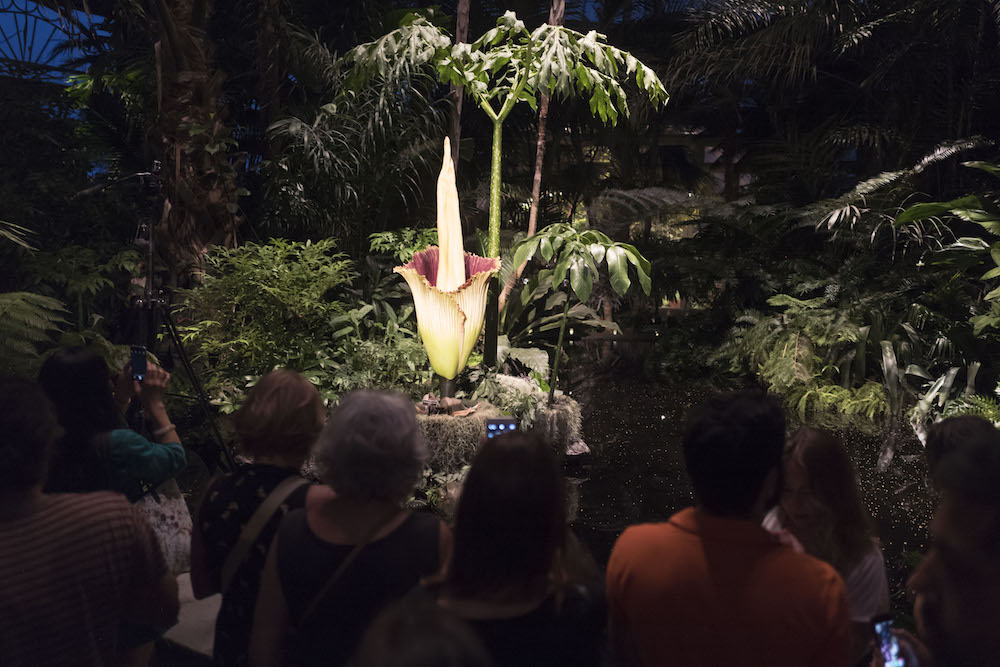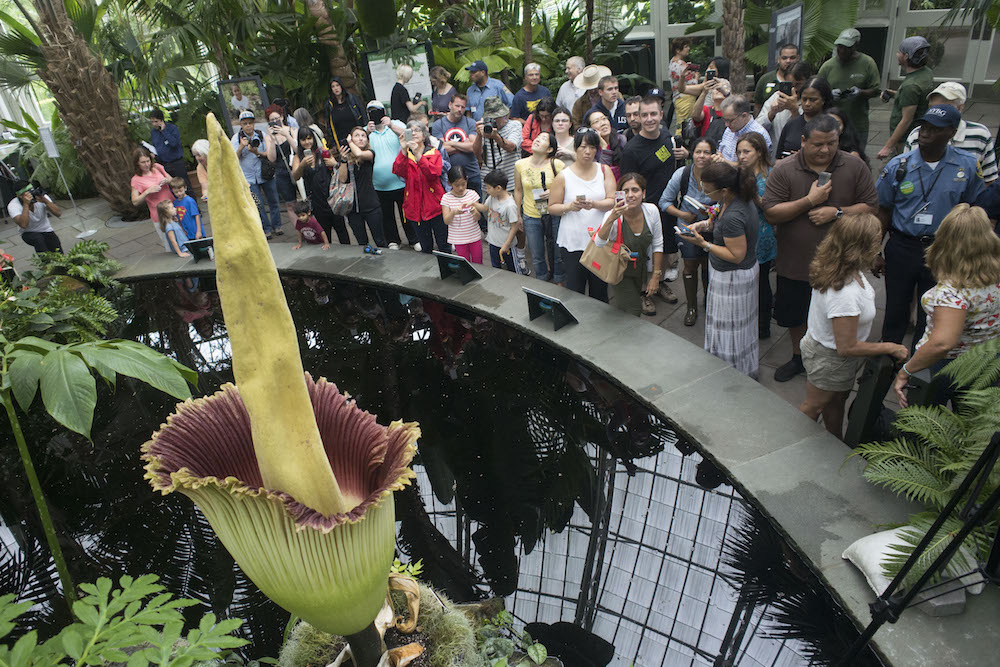Putrid-Smelling Corpse Flower Finally Blooms: Watch It Live

Normally, the smell of putrefying, decaying flesh wouldn't be cause for celebration, but it is today, with the blooming of the rare but stinky corpse flower at the New York Botanical Garden (NYBG).
Horticulturalists have been eyeing the flower since July 15, when they spied a bud on the rare plant. Corpse flowers bloom only once every seven to 10 years, and this is the first time that this particular plant has blossomed since the NYBG acquired it in 2007, they said.
As soon as the bud began to open last night (July 28), NYBG representatives took to Twitter to announce the good news, saying, "Your eyes aren't playing tricks on you. Our corpse flower (finally) started blooming! More info shortly." [Photos: Stinky 'Corpse Flower' Blooms]
The garden announced it would extend its summer hours from 9 a.m. to 8 p.m. EDT so that guests could get a glimpse (and a whiff) of the stinky flower. Garden officials encouraged patrons to visit soon since, as they tweeted, "Bloom cycle is expected to last 24–36 hours, so tomorrow (Friday, July 29) should also be a great time to see it!"
Scientists call corpse flowers Amorphophallus titanum, a name that translates to "giant misshapen phallus." The plants are native to hot and humid Sumatra, Indonesia, and are among the world's tallest flowers, standing between 6 and 12 feet (2 and 4 meters) high, the NYBG said.

In fact, the plant has several flowers, which cluster around the base of the stalk, but are hidden by the dark red "skirt," which isn't a petal but a modified leaf, according to the NYBG.
As the flowers unfold, they release their signature stench — the smell of decaying flesh — that attracts flesh-eating insects, including dung beetles and flesh flies. If these insects successfully pollinate the plant, the flowers will develop red fruit, which visitors can see as the "skirt" withers, NYBG said.
Sign up for the Live Science daily newsletter now
Get the world’s most fascinating discoveries delivered straight to your inbox.
In the wild, birds and other animals will eat and spread the fruit, inadvertently planting new corpse flowers far and wide, garden experts said.
The blossoms may be short-lived, but people can watch the corpse flower on an NYBG live stream.
Almost 80 years has passed since the last corpse flower bloomed at the NYBG, in 1939. But it's far from the only blooming prima donna in the country. People can also see live-stream videos of corpse flowers at the U.S. Botanic Garden in Washington, D.C., and at Indiana University. Both of which are expected to bloom within the next few days.
Original article on Live Science.

Laura is the archaeology and Life's Little Mysteries editor at Live Science. She also reports on general science, including paleontology. Her work has appeared in The New York Times, Scholastic, Popular Science and Spectrum, a site on autism research. She has won multiple awards from the Society of Professional Journalists and the Washington Newspaper Publishers Association for her reporting at a weekly newspaper near Seattle. Laura holds a bachelor's degree in English literature and psychology from Washington University in St. Louis and a master's degree in science writing from NYU.









